
Lip Mixed-Glide
Glides are only transitional sounds. They are intermediate to Consonants and Vowels, combining the characteristics…
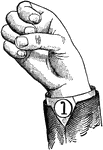
Normal Aperture Back Primary High Vowel
Vowels have a wide, firm, and free channel, whereby the breath is modified without friction or sibilation.…

Normal Aperture Back Primary Mid Vowel
Vowels have a wide, firm, and free channel, whereby the breath is modified without friction or sibilation.…

Normal Aperture Back Primary Low Vowel
Vowels have a wide, firm, and free channel, whereby the breath is modified without friction or sibilation.…

Normal Aperture Back Wide High Vowel
Vowels have a wide, firm, and free channel, whereby the breath is modified without friction or sibilation.…

Normal Aperture Back Wide Mid Vowel
Vowels have a wide, firm, and free channel, whereby the breath is modified without friction or sibilation.…

Normal Aperture Back Wide Low Vowel
Vowels have a wide, firm, and free channel, whereby the breath is modified without friction or sibilation.…
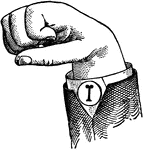
Normal Aperture Mixed Primary High Vowel
Vowels have a wide, firm, and free channel, whereby the breath is modified without friction or sibilation.…
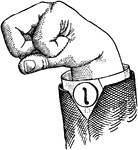
Normal Aperture Mixed Primary Mid Vowel
Vowels have a wide, firm, and free channel, whereby the breath is modified without friction or sibilation.…

Normal Aperture Mixed Wide High Vowel
Vowels have a wide, firm, and free channel, whereby the breath is modified without friction or sibilation.…

Normal Aperture Mixed Wide Mid Vowel
Vowels have a wide, firm, and free channel, whereby the breath is modified without friction or sibilation.…
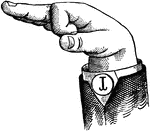
Normal Aperture Mixed Wide Low Vowel
Vowels have a wide, firm, and free channel, whereby the breath is modified without friction or sibilation.…

Normal Aperture Front Primary High Vowel
Vowels have a wide, firm, and free channel, whereby the breath is modified without friction or sibilation.…

Normal Aperture Front Primary Mid Vowel
Vowels have a wide, firm, and free channel, whereby the breath is modified without friction or sibilation.…

Normal Aperture Front Primary Low Vowel
Vowels have a wide, firm, and free channel, whereby the breath is modified without friction or sibilation.…

Normal Aperture Front Wide High Vowel
Vowels have a wide, firm, and free channel, whereby the breath is modified without friction or sibilation.…

Normal Aperture Front Primary Wide Vowel
Vowels have a wide, firm, and free channel, whereby the breath is modified without friction or sibilation.…
Normal Aperture Front Wide Low Vowel
Vowels have a wide, firm, and free channel, whereby the breath is modified without friction or sibilation.…
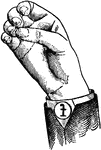
Round Back Primary High Vowel
Vowels have a wide, firm, and free channel, whereby the breath is modified without friction or sibilation.…

Round Back Primary Mid Vowel
Vowels have a wide, firm, and free channel, whereby the breath is modified without friction or sibilation.…

Round Back Primary Low Vowel
Vowels have a wide, firm, and free channel, whereby the breath is modified without friction or sibilation.…

Round Back Wide High Vowel
Vowels have a wide, firm, and free channel, whereby the breath is modified without friction or sibilation.…

Round Back Wide Mid Vowel
Vowels have a wide, firm, and free channel, whereby the breath is modified without friction or sibilation.…

Round Back Wide Low Vowel
Vowels have a wide, firm, and free channel, whereby the breath is modified without friction or sibilation.…
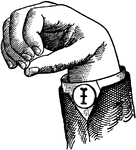
Round Mixed Primary High Vowel
Vowels have a wide, firm, and free channel, whereby the breath is modified without friction or sibilation.…
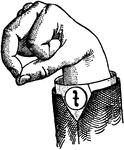
Round Mixed Primary Mid Vowel
Vowels have a wide, firm, and free channel, whereby the breath is modified without friction or sibilation.…
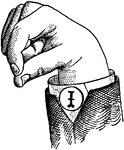
Round Mixed Primary Low Vowel
Vowels have a wide, firm, and free channel, whereby the breath is modified without friction or sibilation.…
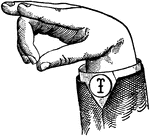
Round Mixed Wide High Vowel
Vowels have a wide, firm, and free channel, whereby the breath is modified without friction or sibilation.…
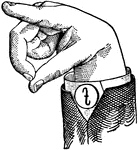
Round Mixed Wide Mid Vowel
Vowels have a wide, firm, and free channel, whereby the breath is modified without friction or sibilation.…
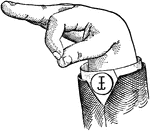
Round Mixed Wide Low Vowel
Vowels have a wide, firm, and free channel, whereby the breath is modified without friction or sibilation.…

Round Front Primary High Vowel
Vowels have a wide, firm, and free channel, whereby the breath is modified without friction or sibilation.…

Round Front Primary Mid Vowel
Vowels have a wide, firm, and free channel, whereby the breath is modified without friction or sibilation.…

Round Front Primary Low Vowel
Vowels have a wide, firm, and free channel, whereby the breath is modified without friction or sibilation.…

Round Front Wide High Vowel
Vowels have a wide, firm, and free channel, whereby the breath is modified without friction or sibilation.…

Round Front Wide Mid Vowel
Vowels have a wide, firm, and free channel, whereby the breath is modified without friction or sibilation.…
Round Front Wide Low Vowel
Vowels have a wide, firm, and free channel, whereby the breath is modified without friction or sibilation.…
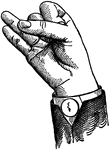
Indicated High Primary Back Glide
Glides are only transitional sounds. They are intermediate to Consonants and Vowels, combining the characteristics…

Indicated High Primary Top Glide
Glides are only transitional sounds. They are intermediate to Consonants and Vowels, combining the characteristics…

Indicated High Primary Point Glide
Glides are only transitional sounds. They are intermediate to Consonants and Vowels, combining the characteristics…

Indicated High Primary Lip Glide
Glides are only transitional sounds. They are intermediate to Consonants and Vowels, combining the characteristics…

Indicated High Wide Back Glide
Glides are only transitional sounds. They are intermediate to Consonants and Vowels, combining the characteristics…

Indicated High Wide Top Glide
Glides are only transitional sounds. They are intermediate to Consonants and Vowels, combining the characteristics…

Indicated High Wide Point Glide
Glides are only transitional sounds. They are intermediate to Consonants and Vowels, combining the characteristics…

Indicated High Wide Lip Glide
Glides are only transitional sounds. They are intermediate to Consonants and Vowels, combining the characteristics…
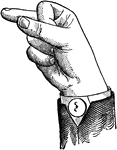
Indicated Mid Primary Back Glide
Glides are only transitional sounds. They are intermediate to Consonants and Vowels, combining the characteristics…

Indicated Mid Primary Top Glide
Glides are only transitional sounds. They are intermediate to Consonants and Vowels, combining the characteristics…

Indicated Mid Primary Point Glide
Glides are only transitional sounds. They are intermediate to Consonants and Vowels, combining the characteristics…

Indicated Mid Primary Lip Glide
Glides are only transitional sounds. They are intermediate to Consonants and Vowels, combining the characteristics…

Indicated Mid Wide Back Glide
Glides are only transitional sounds. They are intermediate to Consonants and Vowels, combining the characteristics…

Indicated Mid Wide Top Glide
Glides are only transitional sounds. They are intermediate to Consonants and Vowels, combining the characteristics…

Indicated Mid Wide Point Glide
Glides are only transitional sounds. They are intermediate to Consonants and Vowels, combining the characteristics…

Indicated Mid Wide Lip Glide
Glides are only transitional sounds. They are intermediate to Consonants and Vowels, combining the characteristics…

Indicated Low Primary Back Glide
Glides are only transitional sounds. They are intermediate to Consonants and Vowels, combining the characteristics…

Indicated Low Primary Top Glide
Glides are only transitional sounds. They are intermediate to Consonants and Vowels, combining the characteristics…

Indicated Low Primary Point Glide
Glides are only transitional sounds. They are intermediate to Consonants and Vowels, combining the characteristics…

Indicated Low Primary Lip Glide
Glides are only transitional sounds. They are intermediate to Consonants and Vowels, combining the characteristics…

Indicated Low Wide Back Glide
Glides are only transitional sounds. They are intermediate to Consonants and Vowels, combining the characteristics…

Indicated Low Wide Top Glide
Glides are only transitional sounds. They are intermediate to Consonants and Vowels, combining the characteristics…

Indicated Low Wide Point Glide
Glides are only transitional sounds. They are intermediate to Consonants and Vowels, combining the characteristics…
Indicated Low Wide Lip Glide
Glides are only transitional sounds. They are intermediate to Consonants and Vowels, combining the characteristics…